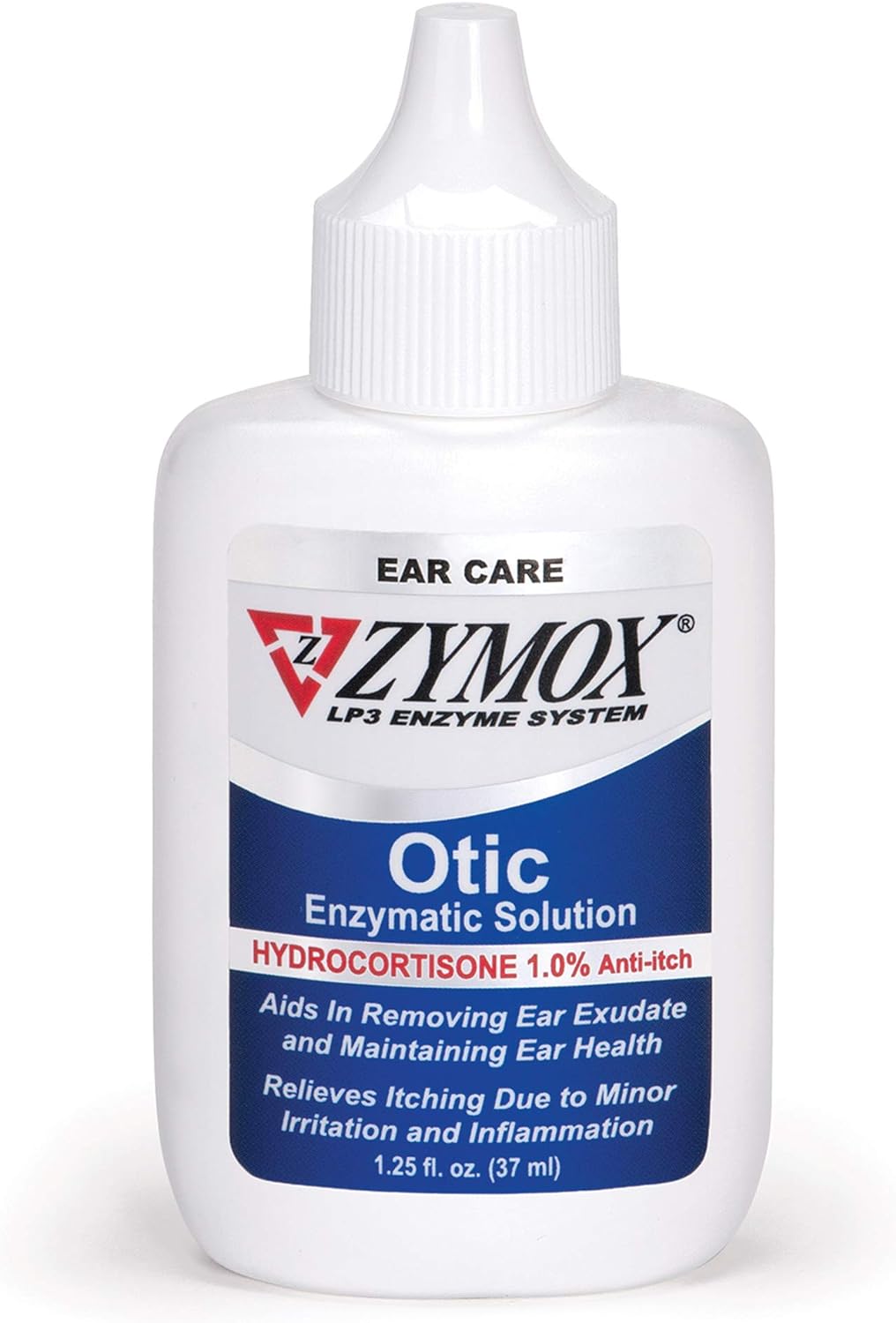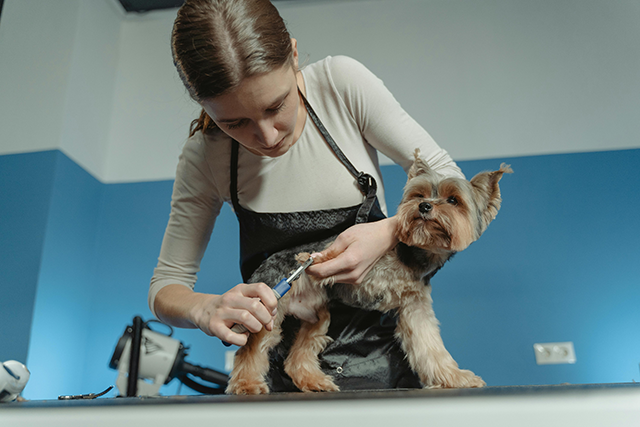If you’re a dog owner, you know how much your furry friend means to you. However, just like humans, dogs can also suffer from various health issues. One of the most common problems that dogs face is ear infections.
Ear infections in dogs are a result of bacteria or yeast overgrowth inside the ear canal. It can be caused by factors such as allergies, foreign objects in the ear, and excessive moisture. If left untreated, it can lead to serious health complications.
But before rushing your dog off to the vet, there are some steps you can take to treat their ear infection at home. Not only will this save you money on expensive vet bills, but it will also ensure a speedy recovery for your beloved pet.
Is it Normal for Dogs to Get Ear Infections?
Yes, it’s fairly common for dogs to get ear infections, and it’s a condition that many dog owners have to deal with. Certain breeds with floppy ears, like Basset Hounds and Cocker Spaniels, are more prone to ear infections due to restricted airflow in their ear canals, creating a humid environment where bacteria and yeast thrive. However, it’s not exclusive to them; dogs with erect ears can also suffer from ear infections.
Factors like allergies, ear mites, wax build-up, and moisture can all contribute to the development of an infection. While it’s a common issue, regular ear cleaning and monitoring for signs of discomfort can help prevent infections and keep your dog happy and healthy.
What are the Signs of an Ear Infection in a Dog?
Recognizing the signs of an ear infection early can help prevent more severe issues down the line. Here are some indicators to watch for in your pet:
Excessive Scratching or Rubbing: Dogs with ear infections often scratch their ears vigorously or rub them against furniture or the floor, trying to alleviate discomfort.
Redness and Swelling: The inside of the ear may appear red and swollen due to inflammation.
Odor: A strong, unpleasant smell emanating from the ears is a common sign of infection.
Discharge: You might notice a yellow, brown, or bloody discharge coming from your dog’s ear.
Head-Shaking or Tilting: Dogs with ear infections may shake their heads frequently or hold their heads to one side in an attempt to ease their discomfort.
Loss of Balance: An ear infection can affect a dog’s balance in more severe cases, causing them to stumble or walk in circles.
Hearing Loss: Prolonged infections can lead to temporary or permanent hearing loss.
If you notice any of these symptoms in your dog, it’s important to take action immediately to alleviate their discomfort and prevent the infection from worsening.
How Can I Treat My Dog’s Ear Infection at Home?
Treating your dog’s ear infection at home can be a straightforward process if you follow these steps carefully and use the right products. The goal is to alleviate discomfort, reduce inflammation, and eliminate the underlying cause of the infection.
Identify Symptoms: First, ensure that your dog is actually suffering from an ear infection. As mentioned above, look for signs like scratching, redness, odor, or discharge.
Choose the Right Treatment Solution: The Zymox Otic Enzymatic Solution is a highly recommended product for treating ear infections at home. This gentle, no-sting formula soothes ear infections, redness, and inflammation without requiring pre-cleaning painful ears. It features a patented LP3 Enzyme System that helps clear ear secretions and promotes healthy ears. Available in a 1.25 oz size for [$23.79] on Amazon, it’s a top pick for pet owners.
Application of the Solution: Fill the ear canal with the solution, gently massaging the base of the ear to ensure the solution spreads throughout the infected area. The 1% Hydrocortisone in the solution will provide itch relief. There’s no need to clean the ear before application, which makes it easier if your dog’s ears are particularly sensitive.
Use Absorbent Cotton Balls for Cleaning: After allowing the solution to work for a few minutes, use Cliganic Super Jumbo Cotton Balls to clean any excess solution and discharge from the accessible part of the ear. These hypoallergenic, absorbent cotton balls are perfect for sensitive areas and are available for [$9.99] for a 200-count pack on Amazon.
Consider Supplements for Extra Support: In addition to topical treatments, consider adding a supplement to your pet’s regimen, like the BestLife4Pets Ear Infection Relief. Priced at [$35.99] with a 20% coupon on subscription, these easy-to-use pills can help relieve ear aches, itching, and inflammation from within. They are made from all-natural ingredients, safe for all breeds, and can be given directly by mouth or mixed with food.
Remember, while these steps can significantly relieve your pet’s discomfort and clear up the infection, it’s important to monitor your dog’s symptoms closely. If there’s no improvement or the condition worsens, consult your veterinarian immediately.
How Long Do Dog Ear Infections Last?
The duration of a dog ear infection can vary greatly depending on several factors, such as the underlying cause of the infection, how soon treatment begins, and how well the treatment is followed through.
Typically, if treated properly and promptly, you may start to see signs of improvement in your dog’s condition within a few days. However, the entire course of treatment should be completed to ensure the infection is fully eradicated, which can take upwards of 1-2 weeks.
In cases where the infection is particularly severe or if it’s a chronic condition, it might take longer, and a vet’s intervention will be crucial. Always monitor your dog’s progress and consult a vet if the condition does not improve or worsen.
What Happens if You Don’t Fix Your Dog’s Ear Infection?
Ignoring or delaying treatment for your dog’s ear infection can have serious, long-term consequences for their health and well-being. Untreated ear infections can lead to chronic pain and discomfort, significantly impacting your furry friend’s quality of life.
The infection can spread deeper into the ear, including the middle and inner ear, leading to more severe conditions such as eardrum rupture or permanent hearing loss. In extreme cases, the infection can extend to affect the dog’s ability to maintain balance, causing vestibular disease, which is characterized by severe disorientation, nausea, and difficulty walking.
Additionally, continuous scratching and shaking of the head due to discomfort can result in blood vessels breaking, leading to hematomas and potentially the need for surgery. Therefore, taking prompt and effective action at the first sign of an ear infection is crucial to prevent these adverse outcomes and ensure your dog’s health and happiness.
Proactive Care in Preventing and Treating Dog Ear Infections
Being vigilant in recognizing the early signs of ear infections and taking swift action to treat them is paramount for every pet owner. Simple steps, such as regular checks and maintaining ear hygiene, along with timely, effective treatment, can prevent most complications associated with ear infections.
It’s essential to remember that while there are effective home remedies and over-the-counter solutions, consulting your vet is always the best course of action in severe cases. By being proactive in the care of your dog’s ears, you can help ensure a happy, healthy life for your furry companion.
Jessica is a veterinary medicine student who is passionate about animals. Living with her cherished dog, Milo, deepens her understanding of the human-animal connection, enhancing her empathy as a future veterinarian.
Jessica’s concise articles reflect her dedication to improving the lives of animals and those who care for them, making her an inspiring figure in the pet care field.







